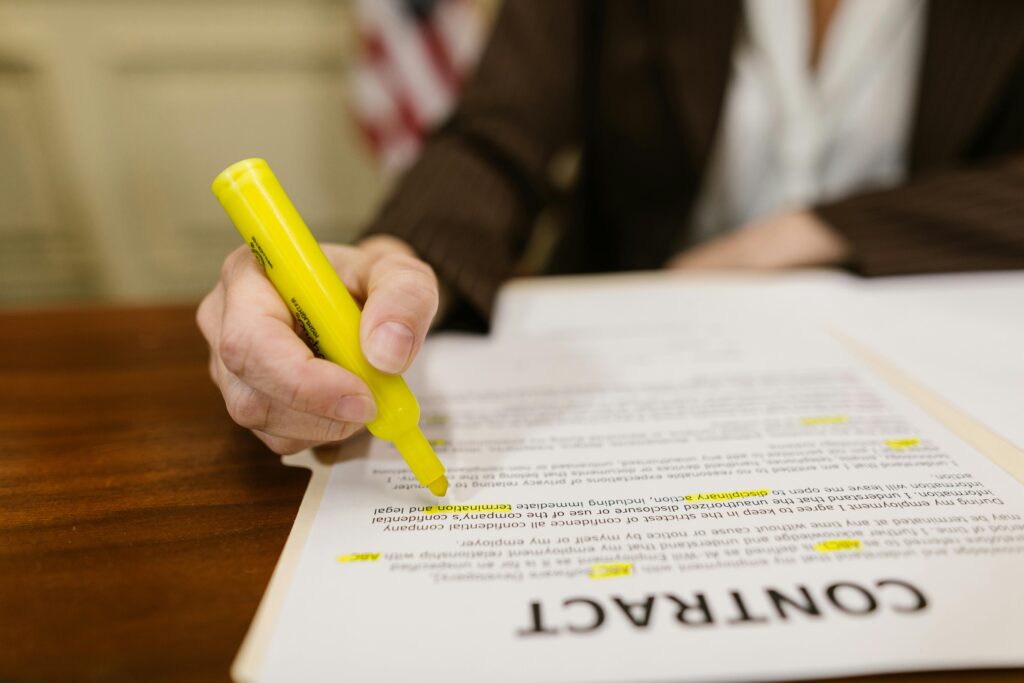If you’ve built something new—a product, a process, a piece of software—you probably want to protect it. Not just to stop copycats, but to give your startup an edge. A patent can help. But getting a patent is confusing. It’s full of legal terms, forms, and rules. It takes time. And it’s expensive.
Understanding What a Provisional Patent Application Really Is
It’s more than a placeholder—it’s a startup’s first move in the IP game
For founders and inventors moving fast, a provisional patent application is often the first—and smartest—legal step you’ll take to protect your innovation.
It doesn’t just mark the date you invented something.
It sets a line in the sand that says, “This idea is mine.” That’s powerful. Especially when you’re building in a crowded market where others may be racing to solve the same problem.
Many people make the mistake of seeing a provisional patent application as a rough draft or a throwaway step.
But that’s a huge misunderstanding. A well-written provisional can shape your entire IP strategy.
It’s not just about checking a box—it’s about controlling your timeline, building confidence with investors, and creating leverage for future growth.
Think of it as your invention’s timestamp—and your startup’s IP runway
When you file a provisional application, you’re locking in your invention’s birthdate. That date becomes your official spot in line.
Even if someone else files a full patent months later, if your provisional was filed first, you’ve got the priority.
But there’s something even more strategic going on.
Filing provisionally gives you twelve months to test your idea, iterate, talk to customers, pitch investors, and build traction.
All while knowing that your innovation is at least temporarily protected. That freedom to explore without rushing into a full patent application is priceless.
Use that year wisely. It’s not just about buying time—it’s about building clarity. You’re refining your product. You’re getting feedback.
You’re seeing what features matter and which ones don’t.
By the time you’re ready to file the full application, you’ll be able to focus your patent claims on the parts of your invention that actually deliver value.
A provisional application gives you room to evolve—without losing your edge
In the startup world, nothing stays still. Your MVP changes. Your codebase evolves. Your market focus shifts.
The beauty of a provisional application is that it protects your core idea even as the details change.
You’re not locking in the final version of your product. You’re staking your claim on the concept, the mechanism, the method.
But this only works if your provisional application is strong enough to support those changes. If it’s too vague, or leaves out key details, it won’t help you later.
That’s why taking the time to draft it well—especially using AI to help you be clear and thorough—is a strategic move, not just a legal one.
Here’s an actionable way to think about it: Write your provisional like a blueprint. Don’t worry about legal claims yet.
Just focus on what makes your idea tick. What’s the core mechanic that gives it value? Describe that fully. Then describe the other parts that make it usable.
You’re not trying to write a perfect legal document—you’re trying to document your innovation in a way that’s real, clear, and useful.
Investors take IP seriously—your provisional can help you raise smarter
If you’re raising capital, having a provisional patent application on file can signal to investors that you’re serious about protecting what you’ve built.
But it’s not just about having a patent number. It’s about showing that you’re thinking long-term. That you understand the value of your IP.
That you’re not just building for today—you’re building an asset.
This makes your startup more defensible. It opens doors to strategic partnerships.
It creates options for licensing, acquisition, or future monetization. But only if your provisional is written well enough to support those goals.
So here’s something tactical: Share your provisional strategy with your investors. Don’t just say, “We filed a provisional patent.”
Say, “We’ve filed a provisional that covers our unique approach to [insert core value], and we’re using this year to refine our claims based on user traction.”
That’s a signal of a founder who understands IP as leverage.
Think ahead—but don’t get stuck
A common trap is overthinking the provisional process. Some founders delay filing because they’re still perfecting the product.
But that can backfire. If someone else files before you, you lose your spot. So instead of waiting for perfect, aim for good and complete.
If your invention is real and working, you probably have enough to file.
If you’re using AI, you can make sure it’s written clearly and thoroughly, even if you’re not finished building.
Then you can refine the details later, either in a new provisional or when you file the non-provisional.
Here’s a final tip: set a deadline. Give yourself a clear date to file your provisional, even if your product isn’t done.
Use AI to get a draft in place fast, then iterate. Treat it like your product dev cycle—launch the MVP, then improve.
Why Use AI to Draft a Provisional Patent Application?
Because AI helps you do more with less—and faster than ever
Startups move fast. Resources are tight. Founders wear multiple hats.
And when it comes to protecting your IP, waiting around for a traditional law firm to write your provisional can slow everything down. AI changes that.
It doesn’t just speed things up. It gives you more control. You can work on your own time, with your own voice, and get something in place quickly.
You’re not dependent on someone else’s schedule. You’re not rewriting emails or waiting on back-and-forth edits.
You’re drafting directly from your own knowledge, with AI guiding you the whole way.
AI doesn’t replace legal insight—but it gets you 80% of the way there.
Then, when real attorneys step in to review or refine, they’re starting from a strong draft. That saves time. It saves money. And it gives you a better end result.
AI gives structure to your thinking—and clarity to your invention
One of the hardest parts of writing a provisional patent application is knowing what to include and how to say it.
When you’re deep in your own product, it’s easy to either say too much or skip over key pieces without realizing it.
AI helps by asking the right questions. Not legal questions—practical ones. Things like: How does this work? What happens next?
What other ways could this function? These prompts help you think through your invention in a deeper way.
They push you to be clear, specific, and complete. And in the process, you end up understanding your own product even better.

That’s not just good for your patent. It’s good for your entire business.
When you’re forced to explain exactly how something works, why it’s better, and what makes it unique, you sharpen your product thinking.
That clarity ripples out to your pitch deck, your roadmap, and your sales strategy.
You don’t need to know the law—you just need to know your invention
The beauty of using AI for provisional drafting is that you can stay in your lane. You’re the expert on your invention.
AI helps turn that expertise into a draft that meets the expectations of the patent system.
You don’t need to spend hours reading guides or searching for templates. You don’t need to worry about the right phrasing or structure.
You just explain what you’ve built, and AI helps you shape it into something that’s legally meaningful.
This removes a huge mental barrier. It lets you focus on your core strength—building—while still taking real steps to protect your IP.
Here’s a tactical move: After using AI to create a draft, walk away from it for a day. Then come back and review it like you’re an outsider.
Does it explain what you built? Could someone else understand it? That small pause helps you catch blind spots before you file.
AI gives startups leverage in a system built for giants
The patent system wasn’t designed for speed. It wasn’t built for scrappy teams or solo founders. It moves slowly.
It costs a lot. And it’s filled with red tape. Big companies can afford that. But most startups can’t.
Using AI to draft your provisional is how you level the playing field. It lets you move at startup speed without cutting corners.
You’re not skipping legal review—you’re just front-loading the heavy lifting so that review is faster, cheaper, and more effective.
That’s a strategic edge. While other startups are still debating whether to hire a lawyer, you’ve already filed.
While they’re worrying about costs, you’ve built a defensible IP asset.
And when it’s time to raise or negotiate, you’ve got something real on file—something that shows you’ve thought about your IP like a serious founder.
AI makes that possible. Not by replacing people—but by helping you move smarter, sooner.
The First Step: Capture What Makes Your Idea Special
You can’t protect what you can’t clearly describe
Before you even open a drafting tool or think about language, you have to slow down and do something deceptively simple: figure out what actually makes your idea worth protecting.

That may sound obvious, but it’s the part most founders rush through. They’re eager to file something, anything.
But if you haven’t nailed what makes your invention different, your application won’t hold up when it matters.
This isn’t about hype. It’s not about marketing language. It’s about the core of your innovation. Not what it looks like. Not the UI.
Not the name. It’s what’s happening under the hood that no one else has figured out yet.
That’s what gives your product defensibility. That’s what your provisional needs to capture.
Start by going deep on the problem you solved. What was broken in your space? What was clunky, slow, or inefficient?
You probably didn’t just build something new—you fixed something old. The way you solved that problem is your unique edge.
And that’s exactly what you want to pin down before anything else.
Use AI to pressure test your idea from multiple angles
Once you’ve written out your basic idea, you can use AI to challenge it. Feed it your core concept, and ask: Is this really new?
What makes it different from known solutions? What other ways could this problem be solved?
This kind of feedback is priceless. It pushes you to think deeper. It helps you see your invention not just as a product, but as a mechanism.
That distinction is everything in a patent. You’re not protecting what your app looks like or what your website says. You’re protecting how it works and why that matters.
A strong provisional application starts with this kind of hard thinking. It’s not just about writing—it’s about clarity.
And clarity only comes when you test your idea against real questions. The better you can answer those, the stronger your application becomes.
Here’s an advanced tactic: Try to explain your invention without naming your product. If you remove the branding, the buzzwords, and the UI—what’s left?
If you can still clearly explain what you’ve built and why it’s different, you’re on the right track.
Your competitive edge should live in your explanation
The biggest mistake startups make in patent filings is staying too surface-level. They describe what the product does instead of what it enables.
They talk features instead of mechanisms. But here’s the trick: Features can be copied. Mechanisms are harder to replicate.

Let’s say your app recommends better workouts. That’s a feature.
But if the recommendation engine uses a new type of data input, or a new logic sequence, or a custom scoring model—those are mechanisms. And those are patentable.
AI can help you draw that line more clearly. You can describe the feature, and AI will prompt you to dig into how it actually works behind the scenes.
That’s where the gold is. That’s where your competitive advantage lives. And that’s what your provisional should focus on.
Treat your provisional application like your IP pitch deck. You’re not just describing a product.
You’re showing how your product works in a way that’s original and hard to copy. The clearer that picture, the stronger your IP position becomes.
Write like you’re explaining the “aha moment” to a cofounder
One of the best ways to find clarity is to go back to the beginning. Before you built anything.
Before the website. Before the launch. What was the insight that made you say, “Wait—we could fix this”?
That moment is what gives your invention power. And it’s usually where the protectable mechanism lives.
AI can help you build outward from that moment—connecting your early insight to the technical execution.
This creates a full picture: what inspired you, what you built, and how it actually works.
Here’s something actionable: Talk it out loud. Record yourself explaining the origin story of your idea like you’re telling a cofounder.
Don’t script it. Just talk. Then take that recording, transcribe it, and feed it into your AI tool. Let the AI help pull out the core ideas.
This helps you preserve your original thinking while shaping it into something formal enough for a patent.
Focus on What You Built—and How It Works
The power is in the details, not the buzzwords
Once you’ve nailed what makes your invention special, the next move is to explain exactly how it works. This is the part of your provisional application that matters most.
If the patent office—or a future competitor—can’t understand your invention from what you’ve written, you’ve got a problem.
This isn’t about listing features or marketing claims. It’s about walking someone through the actual mechanics of your solution so they could, in theory, build it themselves.

That might feel uncomfortable. After all, you’ve worked hard to build something unique.
But here’s the truth: you don’t get protection without disclosure. You can’t claim exclusive rights to something you don’t clearly explain.
A strong provisional doesn’t just say what your invention does—it shows how it gets there.
AI tools are especially helpful here because they turn vague language into precise explanations. If you say, “The system optimizes data,” that’s not enough.
AI will nudge you to explain what data, what process, what rules, what output. And the more specific you are, the stronger your protection becomes.
Describe it like a technical walkthrough, not a pitch
Think about how you’d onboard a new engineer. You wouldn’t just say, “We built a tool that automates onboarding.”
You’d explain how it works—what triggers the workflow, what data it pulls, how it makes decisions, what systems it talks to, and how results are delivered.
That’s exactly how you should explain your invention in a provisional.
Start from the user action or system event that kicks things off. Then walk through each step of the process as it unfolds.
What modules or components are involved? What logic do they follow? Where is the decision-making happening? What’s being stored or transmitted?
Don’t assume the reader can fill in the blanks. Spell out each part of the system or method clearly, even if it feels obvious to you.
This isn’t about writing more—it’s about writing the right things.
AI can help you fill in gaps by prompting questions like “What happens after this step?” or “How does the system know what to do next?”
These prompts surface assumptions you didn’t realize you were making—and that’s a good thing.
Because the more complete your explanation, the more defensible your patent becomes.
Translate your product’s flow into patent language—without losing clarity
Many founders get stuck here because they don’t speak “patent.”
They know how their system works, but they don’t know how to describe it in a way that fits patent expectations. That’s where AI becomes your secret weapon.
When you describe your product in plain language, AI can help translate that into something closer to patent-ready form.
Not legal boilerplate—just clearer, more structured descriptions.
For example, it might take “the system recommends a next step based on previous activity” and help you shape it into something like “a recommendation engine receives user interaction data and selects a subsequent action using a priority-ranking algorithm.”
That may sound small, but that clarity matters.
It’s the difference between an application that gets ignored and one that forms the foundation of a real asset.
Here’s a tactical approach: Write out your process like you’re narrating it. Don’t worry about sounding smart.
Then ask AI to organize that narrative into a technical sequence. Use that as the backbone of your “how it works” section.
Your first draft won’t be perfect—and that’s the point
Many founders freeze at this stage because they think they have to get the language right on the first try. But you don’t.
You just need to get your thinking out of your head and into words. The AI will help you refine from there.
In fact, the rougher your draft, the more helpful the AI can be.
This isn’t about writing a legal document. It’s about capturing the technical truth of your invention in the clearest way possible.
If you do that, you’ll have a strong foundation. You can always layer in legal framing later—either with AI help or real attorney input.
But without that solid technical story, none of it matters.
Think of your draft like a model. It doesn’t need to be polished, but it does need to stand up on its own.
It should describe a working system or process in enough detail that someone else could reasonably recreate it. That’s the bar.
If you’re not sure you’ve hit it, try this trick: Have someone technical but unfamiliar with your product read your description.

Ask them to describe it back to you. If they get it right, you’ve nailed the level of detail.
If they’re confused or ask lots of follow-up questions, you’ve got more work to do—and AI can help you tighten those gaps.
Wrapping It Up
If you’ve built something new, something you know is valuable, the last thing you want is to leave it exposed. But too many startups wait. They wait for funding. They wait for legal help. They wait for their product to be “perfect.” And in the meantime, someone else files first.

